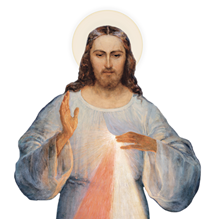
"Christ died for love of us: let us suffer for love of Him. He carried His cross: let us help Him to bear it."
By Kimberly Bruce
Saint John of Ávila (feast day: May 10) is one of the Catholic Church's most recent Holy Doctors, designated on Oct. 31, 2012. On the occasion, he was praised by Pope Benedict XVI for being “constantly grounded in the sacred Scriptures, passionately concerned for the truth and an outstanding precursor of the new evangelization."
Born in Almodóvar del Campo, Spain, on Jan. 6, c.1499, St. John was the only child of wealthy parents Alonso Ávila and Catalina Gijón. From an early age, he showed marked signs of his vocation and call to ascetism.
At the age of 5, relays editor J. G. Macleod in Life of the Blessed Master John of Ávila:
[John] was often found by the servants in the dead of night either kneeling in prayer, trembling and benumbed with cold, or lying, worn out by his long vigils, asleep upon the ground. When he was later than usual in returning home from school he was always discovered in a corner of some church, holding sweet converse with his Lord in the Blessed Sacrament.
Macleod reveals a most telling story about young St. John. Given a new velvet suit by his mother, he could not bring himself to wear it, hating any kind of pomp or affectations for himself. He did not rest until he had exchanged his clothes with those of a poor beggar child.
When asked by his mother why he had done this, Macleod said his response, in effect, was “that the exchange had done justice to both of them.”
At 14, St. John was enrolled in law school, but quit at the end of his fourth term. He returned home, discerned a call to the priesthood, and was ordained in 1526. Upon the deaths of his parents, he sold all he had inherited and gave the money to the poor.
A written legacy
“Father Master Ávila,” as he was first called by his colleagues, left the Church many important writings, such as Audi Filia ("Listen, O Daughter"); a Treatise on the Love of God; a Treatise on the Priesthood; his Christian Doctrine (or catechism); and numerous scriptural commentaries, sermons, and letters.
The spiritual classic Audi Filia expresses “the spousal love between Christ and the Church,” noted Pope Benedict. It is also Marian because configuring oneself to Christ “is a process of growth in virtues and gifts which takes Mary as our model and Mother."
Saint John also provided the Church with a way of nurturing vocations and better educating those studying for the priesthood by his founding of colleges and universities. His reforms attracted others to the religious life. He befriended and became spiritual director to many holy individuals including St. Ignatius of Loyola, St. Teresa of Ávila, and St. John of God.
Letter writing
Always concerned for his flock, St. John wrote many letters to individuals encouraging them in holiness. To a widow, he wrote, “Let prayers and tears be your weapons, and these, not useless tears for what our Lord has taken from you, but life-giving tears, which may gain pardon for your husband’s soul and salvation for your own.”
To another suffering with illness, he wrote:
You may well be content to serve our Lord in illness, for when he calls people to suffer instead of working for Him, He is calling them to a higher state. During our earthly exile, it is most fitting that we should carry the cross with Christ, who loved it so dearly that He chose to die on it. We can do this better in sickness than in health, for illness is repugnant to flesh and blood and can never cause vain glory.
Final years
No stranger to sickness himself, St. John suffered from illnesses during the last 18 years of his life. Collecting many jealous enemies, due to his popularity, he was wrongfully imprisoned for two years after preaching a sermon in 1531 that his enemies claimed exaggerated the dangers of wealth and closed the doors of Heaven to the rich.
Dying peacefully on May 10, 1569, he was buried in the Church of the Incarnation in Montilla, Spain. He was declared a saint in 1970 by Pope St. Paul VI.
Saint John of Avila, pray for us, and help us to grow in holiness!
{shopmercy-ad}

















